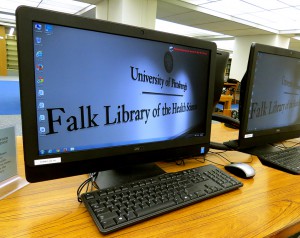Presentations
A.E. Carter1 presented a poster, “Racial and Ethnic Disparities in Healthcare among Women in the VA: A Systematic Review,” at the Society for General Internal Medicine (SGIM) 38th Annual Meeting, in Toronto, Ontario, Canada, on April 22-25, 2015. Co-authors were S. Borrero2, B. Bean-Mayberry3, D. Washington4, C.B. Wessel, head of reference and research initiatives, and J.A. Corbelli5.
1. Internal Medicine Residency Program, University of Pittsburgh, Pittsburgh, PA.
2. Division of General Internal Medicine, University of Pittsburgh, and the VA Pittsburgh Healthcare System, Pittsburgh, PA.
3.-4. VA Greater Los Angeles Healthcare System, Los Angeles, CA.
5. Division of General Internal Medicine, University of Pittsburgh, Pittsburgh, PA.
Wesley M. Rohrer1 presented, “Road Traffic Accidents in Eastern Mediterranean Region: Pilot Systematic Review,” at the 7th Annual Conference on Health Issues in Arab Communities, in Muscat, Oman, on March 5, 2015. Co-authors were Barbara L. Folb, public health informationist, Carroline P. Lobo2, Alexandra Dulin3, and Khaled Al-Surimi4.
1.-3. Department of Health Policy and Management, Graduate School of Public Health, University of Pittsburgh, Pittsburgh, PA.
4. College of Public Health and Health Informatics, King Saud bin Abdulaziz University for Health Sciences, Kingdom of Saudi Arabia.
Publication
Charlie Wessel, head of research and reference initiatives, was acknowledged for his medical librarian assistance in the article, “Official American Thoracic Society Technical Standards: Spirometry in the Occupational Setting,” in the American Journal of Respiratory and Critical Care Medicine, April 15, 2014, 189(8): 983-993.




 The public area computers on the main floor of Falk Library were recently updated. The new all-in-one computers with 23 inch screens integrate the computer system’s internal components into the monitor so the entire computer is enclosed in one unit. The computers are powered by Intel Core i5™ processors that deliver high-speed performance.
The public area computers on the main floor of Falk Library were recently updated. The new all-in-one computers with 23 inch screens integrate the computer system’s internal components into the monitor so the entire computer is enclosed in one unit. The computers are powered by Intel Core i5™ processors that deliver high-speed performance.